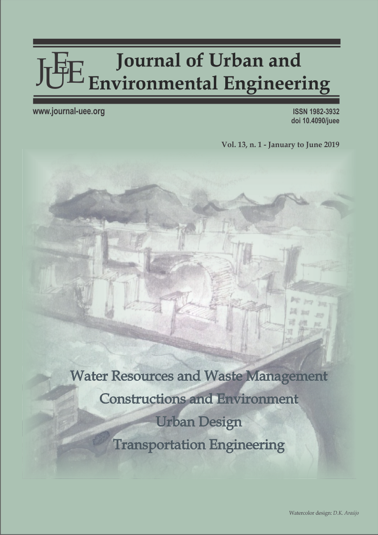SWAT PARAMETERIZATION FOR IDENTIFICATION OF CRITICAL EROSION WATERSHEDS IN THE PIRAPAMA RIVER BASIN, BRAZIL
DOI:
https://doi.org/10.4090/juee.2019.v13n1.42-58Abstract
The aim of this research is to estimate the sediment yield in the Pirapama River Basin and in the area of contribution of the Pirapama Reservoir and to identify areas susceptible to soil erosion for identification of critical erosion watersheds during the period from 2000 to 2010. This study was conducted to design a framework for evaluating and identifying critical erosion in Pirapama watershed, based on the tolerable erosion concept, by using the Soil and Water Assessment Tool (SWAT) model. SWAT was calibrated and validated for two streamflow stations (Cachoeira Tapada and Destilaria Inexport) for the period from 2000 to 2010. The results show that the simulated data for Cachoeira Tapada station were considered good (NS = 0.68 and R² = 0.71) and very good (PBIAS = 1.46%). Regarding the statistical data in the validation, the values of NS (0.67), R² (0.85), and PBIAS (19.18%) were considered good, very good, and satisfactory, respectively. The statistical data obtained in the calibration of the model for the fluviometric station Destilaria Inexport indicated that the simulated data are considered very good, with R² = 0.84, NS = 0.81, and PBIAS = 2.33%. In the validation, the statistics showed values consistent with the literature, with NS = 0.72, R² = 0.86, and PBIAS = –19.11%, which are considered good, very good, and satisfactory, respectively. The estimated average sediment yield in the Pirapama River basin ranged from 0.10 to 129.90 ton/ha.year. The results of the sediment yield estimates in the contribution area of the Pirapama Reservoir showed that the mean sediment yield of the sub-basins upstream of the Pirapama Reservoir was 61.49 ton/ha.year for the period analysed. According to the annual estimates performed, 5.59 ton/ha.year of this amount reaches the Pirapama Reservoir, which corresponds to 9% of the soil losses incident in the area. Thus, the sub-basins upstream of the Pirapama Reservoir were identified as portions of the basin that are susceptible to the erosion process. Sediment yield in these portions can interfere with the volume of water of the Pirapama Reservoir when the eroded material is carried to the depth of the lake.Downloads
Download data is not yet available.
Downloads
Published
2019-10-05
Issue
Section
Articles




